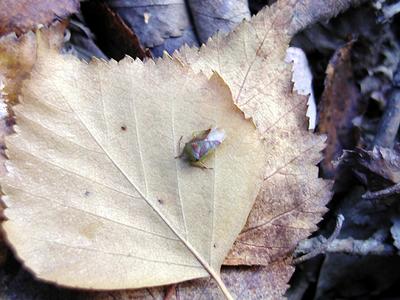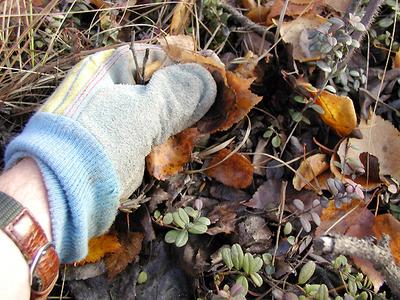17 September, 2002
9/17/02
Rotting Logs & Leaf Litter
From the title of today’s entry, I’m sure you can tell what a wild time we are having in the Arctic. The title refers to the places we must look to find our quarry on this part of our trip. We began our search yesterday morning looking for larvae of the Cucujus beetle. The Cucujus is one of the primary insects of this study because it exists over an extremely large range of area. The same species of Cucujus is found in the Arctic as is found in the Midwest. One of the original goals of this study was to compare the over-wintering abilities of the Cucujus from arctic Alaska to those residing in northern Indiana. Alaskan Cucujus will obviously experience more severe winter conditions and may therefore have some adaptations for wintering that Midwest Cucujus lack. This comparison might then lead to the identification of internal or external ques within the insect that signal the use of these adaptations. In parcticular, the Cucujus beetle is known
to produce the antifreeze proteins that are the subject of this study.
To find the Cucujus beetle, we must identify potential Cucujus habitats. The Cucujus is known to be found under the bark of dead Poplar trees. Armed with that knowledge, our first task is to identify sites with stands of Polar trees that have some fallen trees as well. Once identified, we enter these stands and strip the decaying bark from the fallen trees. It is under this bark that we find the Cucujus. In a single good tree, someone might find as many as 40-50 Cucujus larvae.
After some work identifying potential sites, we finally settled on a site at the edge of a large beaver pond. The beaver in the pond had conveniently felled some Poplars a few years earlier making it a perfect Cucujus site. In fact, we were able to collect the needed 75-80 Cucujus larvae in a single morning.
With our Cucujus collected, we turned our attention to the second local insect of interests; the Birch Shield Beetle, otherwise known to people here as the Alaskan Stinkbug. After spending the summer on the leaves and branches of Birch trees, the stinkbug drops into the leaf litter around the base of the tree. The leaf litter is layers of leaves that gather under the tree in the fall. While in our yards we might rake a dispose of leaves, leaves that fall to the ground in a wooded area pile up and almost immediately begin the process of decay. It is in this decaying leaf matter that we must look for stinkbugs. Digging through leave litter requires that you either sit on the cold damp ground or crawl around on hands and knees while you turn over fallen leaves in a search for a small greenish insect. This process can take many, many hours without success before a number of stinkbugs can be found. We began our search yesterday afternoon and continued today. Our grand total for a day and a half of searching is about 60 total insects. While not a huge total, it is enough for us to use in the upcoming studies. Tomorrow we will plant some of both species in the Wiseman area. Someone from the research team will then recover some of the insects in January and then return for the rest in the spring. With insects planted in our confined habitats, we will be heading back to Fairbanks where I will be spending the rest of my time here in Alaska.

This is Birch Shield Beetle, or better known here as a Stinkbug.

Searching for Stinkbugs requires looking under the top layer of the fallen leaf litter.

If you look at this photo carefully, you can find, Dr. Duman, Val and Todd all searching the leaf litter for Stinkbugs.
Contact the TEA in the field at
.
If you cannot connect through your browser, copy the
TEA's e-mail address in the "To:" line of
your favorite e-mail package.
|
